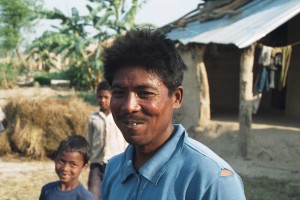Introduction
Introduction of Kamaiyas
Before the know about the Kamaiya, there is need to know the history of Tharu. Please study above on history of Tharu. “Kamaiya” word comes from Tharu language. Its word meaning in Tharu language is the persons who work hard and a lot called as Kamaiya. But the modern meaning of the word Kamaiya is bounded labour. There are different kinds of bounded labour in Nepal. Kamaiya is probably the most exploitative form. It is practiced not in the Nepalof movies and mountaineers, but in the western part of Nepal’s lowland Terai plains. The vast majority of Kamaiya are the indigenous Tharu. The Kamaiya system revolves around a yearly contract made between an agricultural labours and landlord. A Kamaiya would make an agreement with a landowner every Maghi or New Year. The landlord promises to provide an agreed upon remuneration usually paid sacks of rice in return for which must work the whole year for the landlord. In practice, the amount receives is seldom enough to feed Kamaiya’s family for a year, let alone pay for medicine or send his children to school. But Kamaiya has no choice but to agree. Most Kamaiyas own no land themselves, or if they do it is far too little to provide for them. Moreover, most Kamaiyas are already in debt. So Kamaiya must sign the contract with the landlord or find another landlord willing to take over his debt, effectively buying Kamaiya and his family. When Kamaiya gets to the time of year when his food runs out, or when his wife falls sick, or when his daughter is to be married, or when any of the unusual circumstances that are usual in a human life happens, he must borrow again form the landlord. And so the loan grows. And when kamaiya becomes old and con not work, the loan passes on to his sons.
What the landlord kakes form the Kamaiya is not just his labour: it is the ownership of his life in the social world. Because of their debt and poverty most Kamaiyas live in a state of absolute dependence on the landlord. A small trip to the bazaar requires the master’s permission. Perhaps there is bus fare which he will have to borrow or he will have to ask permission to be absent from work. Kamaiys seldom have weekly holidays. In this way, many aspects of the Kamaiyas’ social lives are controlled by their masters: freedom to travel, access to medicine, control of property, and most especially rights to their own children. Of course the extent of the land lords claim varies in some case the general description may not fit, but the point is that the Kamaiya relation at least lays claims to the Kamaiya’s existence as an independent social being. Someone is bough, and someone is sold. In the most extreme cases the Kamaiya becomes a person who goes on working, living-dreaming perhaps -despite their social death.
Photo From : http://franceslk.com/



